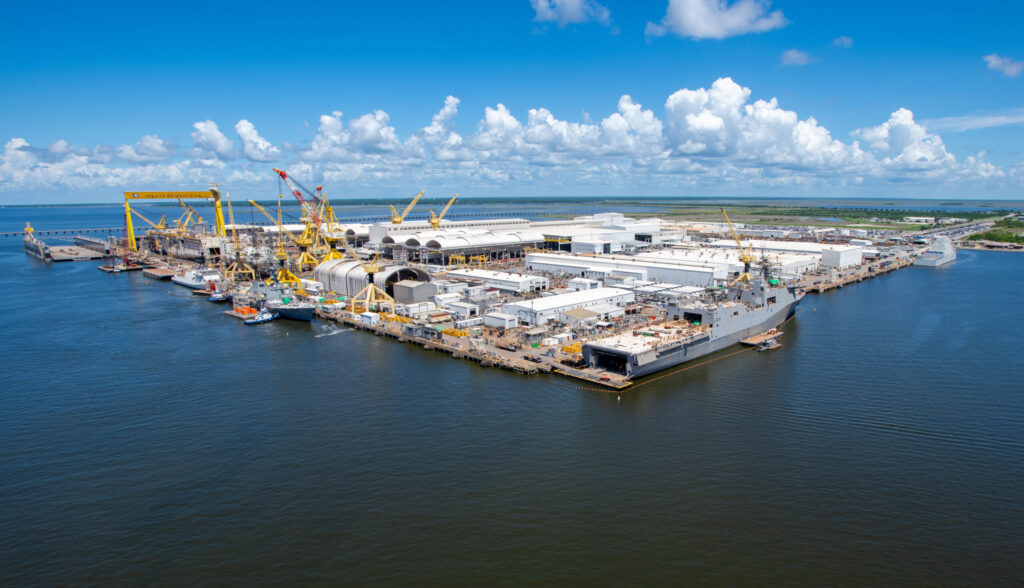
***********
ARLINGTON, Va. — The companies supplying components and materials to the shipbuilders who produce the amphibious warfare ships for the U.S. Navy say that consistency in ship orders brings economies to the work and stability to the industrial base.
“The last few years have been fits and starts on numerous ships in the budget,” said Said David Forster, chairman of the Amphibious Warship Industrial Base Council (AWIBC) and vice president for Global Strategy for Rolls-Royce North America Inc. in an interview with Seapower. “What we have not seen is a consistent shipbuilding program has been substantiated over a FYDP [Future Years Defense Plan] that allows our suppliers the ability to actually plan the work and apply some sort of business practices.”
The AWIBC “is an organization of amphibious warship suppliers who advocate for Congress to provide funding for the sustained and stable construction of amphibious warships vital to the mission of the U.S. Navy and U.S. Marine Corps. The amphibious warship industrial base is comprised of 614 companies in 38 states and 226 Congressional Districts provide parts worth over $1.78 billion for the construction of amphibious warships,” according to an email from the company.
“The industrial base can take a lot more work than it currently has,” Forster said. “In order to do that, you do need a plan which allows the industrial base to respond.”
Forster pointed out that the shipyards need time to ramp up to meet increased production requirements, by hiring and training more skilled workers, ordering more materials, and building or installing more infrastructure and equipment.
“I think the industrial base has the capacity for more shipbuilding,” he said. “It’s not the instantaneous response that everyone would like it to be. But, given enough lead-time, as well as enough information, the industrial base can do almost anything you really want it to do.”
Asked about the 31-ship floor set for the amphibious warship fleet, Forster did not take a position.
“We’re going to let that conversation play within the requirements-setting side of the house, whether that’s the warfare modelers, the Pentagon, Congress,” he said. “We’re standing by, ready to support whatever that requirement is, whether it’s 31 as [Congress] mandated last year in the NDAA [National Defense Authorization Act or whether it’s some other number. … We’re just hoping for consistency in shipbuilding rather than a particular number.”
The Navy’s proposed 2024 budget would fund completion of the fourth America-class amphibious assault ship (LHA), but the associated FYDP would not fund any Flight II San Antonio-class amphibious dock ships (LPDs) for at least five years. The ships are built at HII’s Ingalls shipyard in Pascagoula, Mississippi.
“If we can get the LPDs to about every two-year centers and LHAs to about every four-year centers, what that allows the industrial base to do is apply some of that economic strategy to offset inflation, come through with some investment on whether it’s new capability, new material, new processes, or allows them to invest in workers and retain those workers,” Forster said.
The proposed medium landing ship, scheduled to be funded in 2025 and designed to support Marine littoral regiments, would be an opportunity to strengthen the industrial base.
“That ship does offer opportunity to the other yards which are not the big hull builders,” Forster said. “From an industrial base [perspective], that’s pretty good. That helps sustain the industrial base. It also provides resources into the suppliers.”
“We remain committed to landing ship medium, and for LPD, we’re taking a look at the — the acquisition strategy moving forward, again, to make sure that we would have the right capabilities at the right price, and working with industry partners to put — put together that plan moving forward,” said Undersecretary of the Navy Eric Raven, briefing reporters March 13 on the 2024 budget. … We received a direction from OSD [the Office of the Secretary of Defense] but this will be an integrated team moving forward for that assessment.”
Rear Adm. John Gumbleton, deputy secretary of the Navy for Budget, also briefing the reporters, said the “intent here is not a either/or between a LPD or a medium landing ship, it’s a both, so it’s an end game, and we have time to get this right. … I believe the services are fundamentally aligned on this requirement. Both service chiefs like 31 [large and medium amphibious warships] as a requirement, both service chiefs like multi-year procurements, both service chiefs want to buy in a predictable future. And so, if we can do a study and actually lower the cost of this, that’s all to the good of the Department of the Navy and the Marine Corps.”
- SECNAV: Frigate Delay Due to ‘Atrocious’ Shipyard Worker Retention - May 16, 2024
- SAIC Advances Scalable Open-Architecture Counter-UAS Systems - May 9, 2024
- Navy’s Triton UAV to Provide Targeting for LRASM - May 2, 2024



